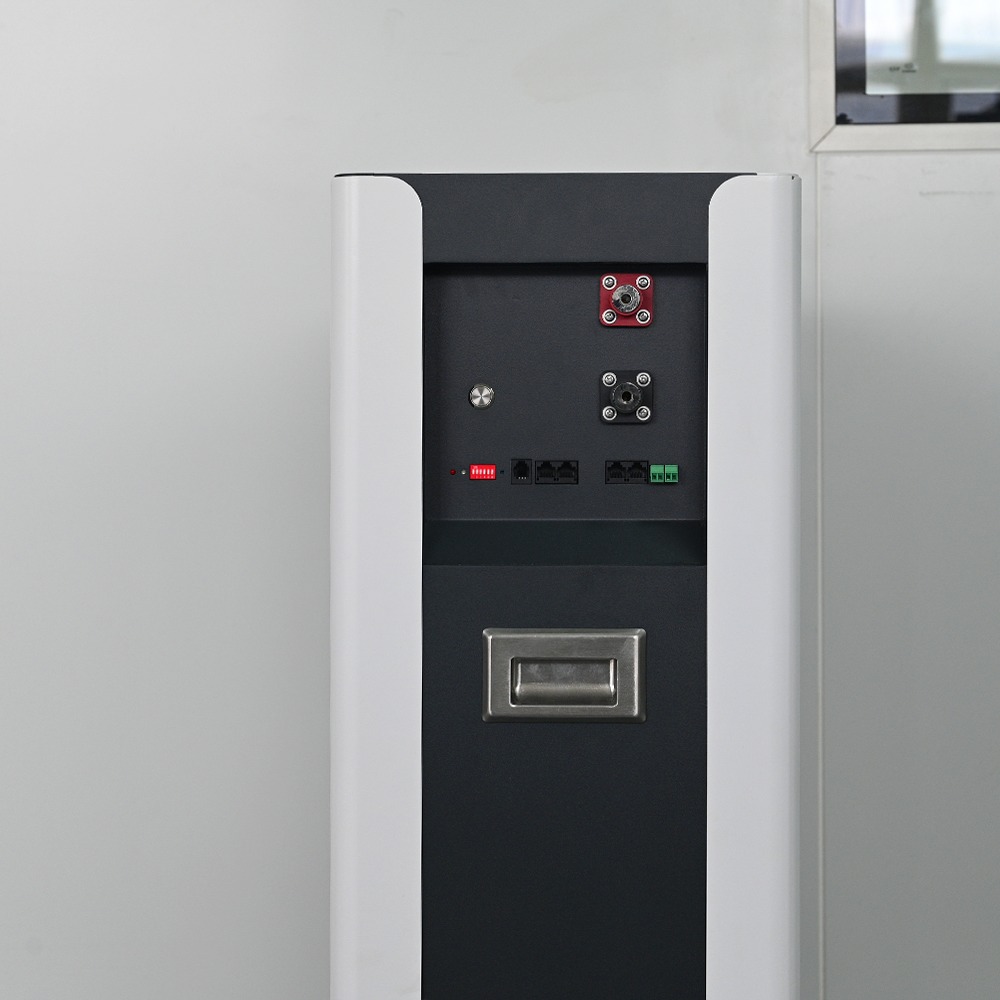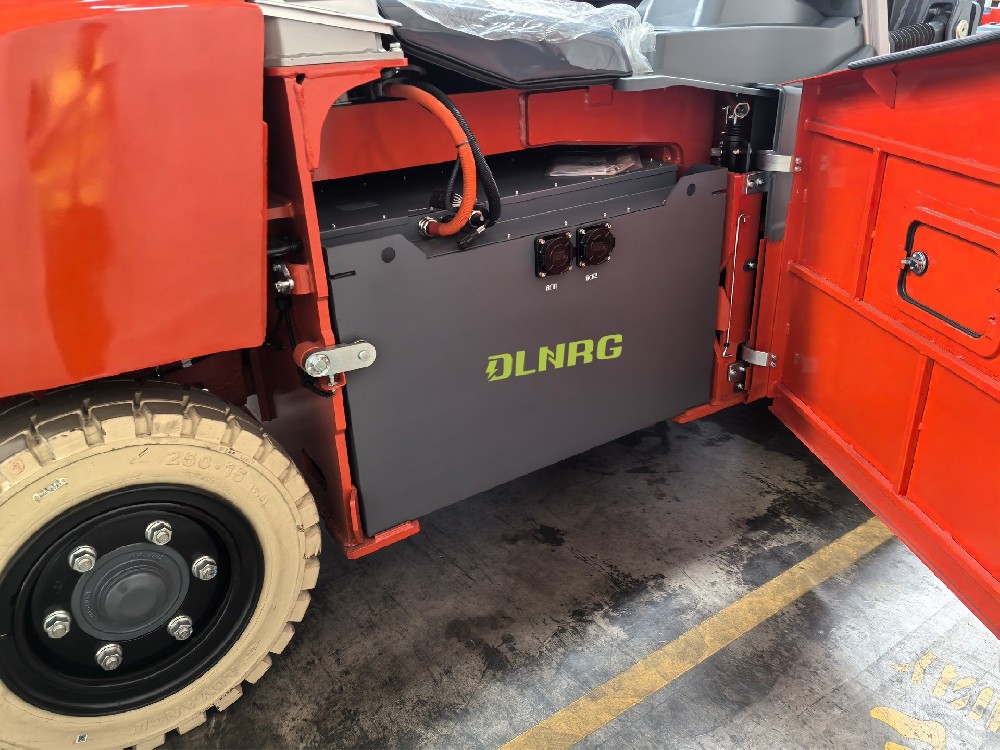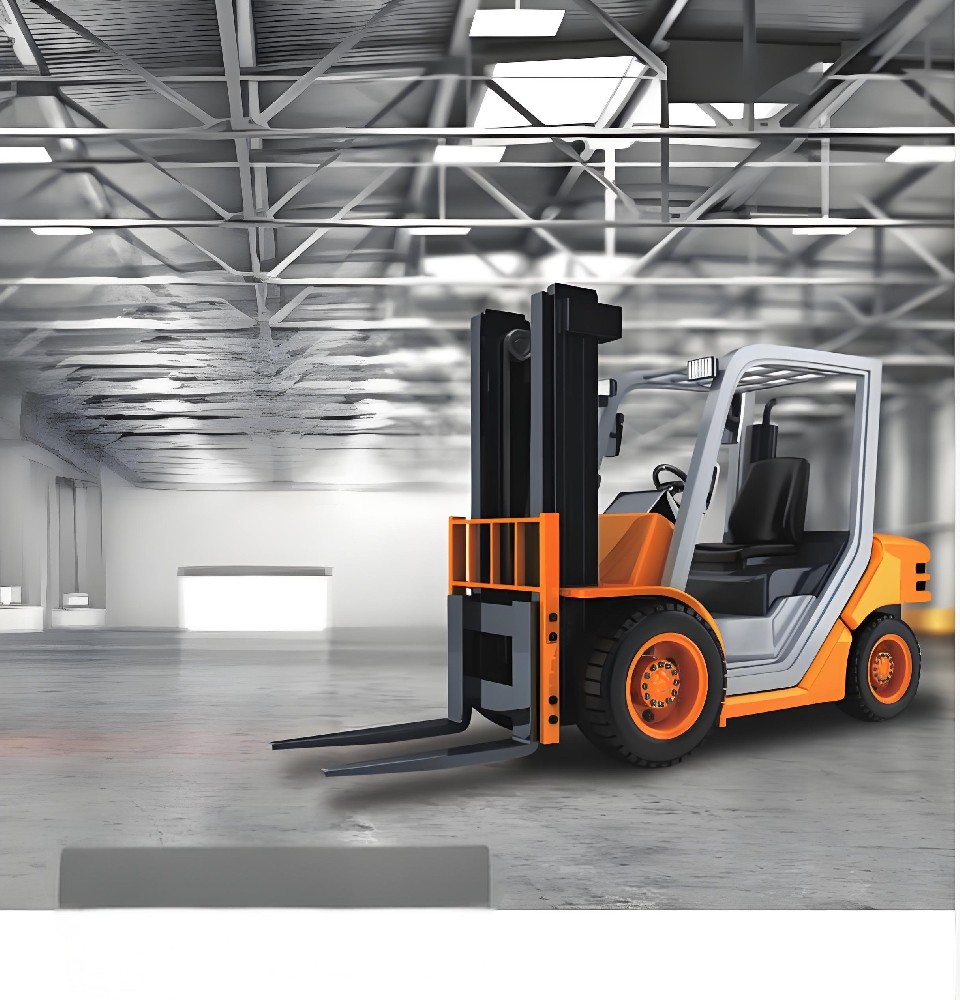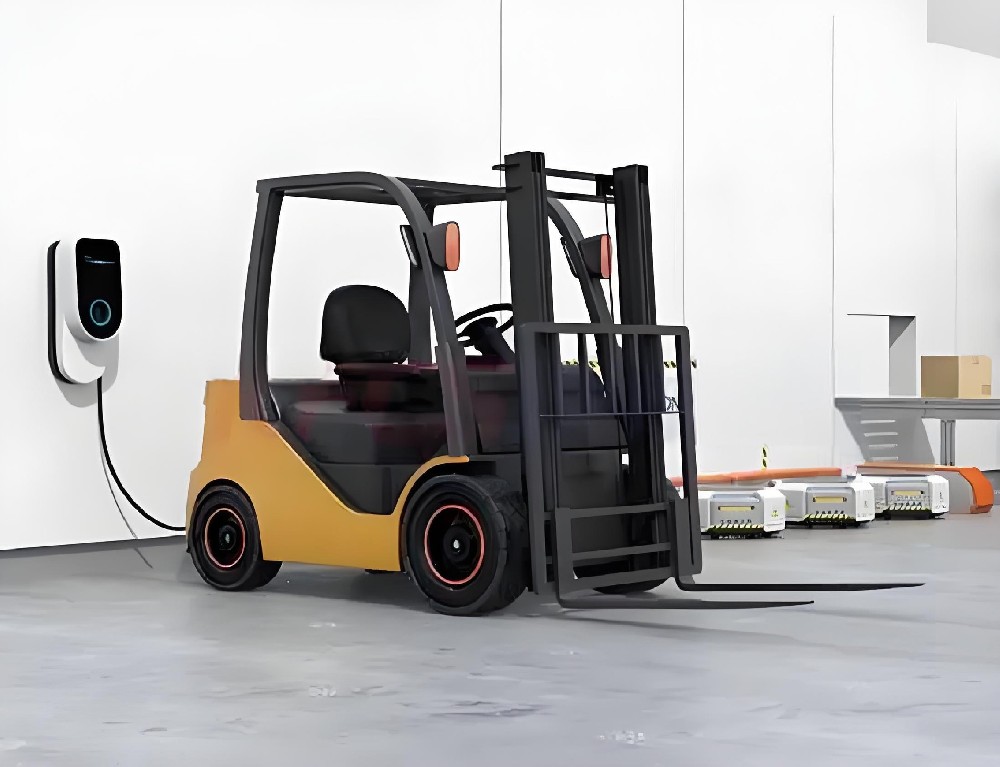Forklifts naturally play a crucial role in managing heavy loads in various industries. They are powered by multiple energy sources, among which lithium-ion batteries have become viral thanks to their long lifespan and high efficiency. However, these batteries may occasionally encounter problems like any other component. Knowing how to troubleshoot common forklift lithium battery problems can help save time and effort, ensuring smooth operations. Below are the most common issues you may encounter and how to effectively troubleshoot them.
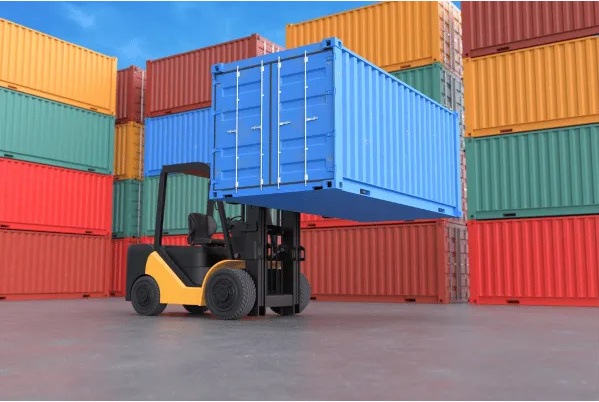
1. Reduced Battery Life
Reduced battery lifespan is a common issue in forklift lithium batteries and can be caused by various factors, such as overcharging, undercharging, or excessive heat.
Troubleshooting
Check the state of charge: Lithium-ion batteries should not be kept at 100% state of charge for an extended period as it can lead to stress, reducing their lifespan. Ensure the battery is
maintained at about 20-90% charge state.
Control the temperature: Overheating can also reduce the battery lifespan. Ensure the battery is used and charged in the recommended temperature ranges.
Consider a battery management system: This can help monitor the state of charge and temperature, preventing possible damage to the battery cells.
2. Battery Doesn’t Charge
Sometimes, forklift operators may observe that the battery doesn’t hold charge or charges exceptionally slowly.
Troubleshooting
Check the charger compatibility: Make sure the charger matches the battery’s voltage and capacity requirements.
Inspect the battery terminals: The terminals should be free from corrosion, and the connections should be snug and secure.
Verify the battery health: Use a battery tester to check the battery’s vitality. It could be that your battery has reached the end of its life and needs replacement.
3. Battery Discharges Quickly
If the lithium-ion battery discharges faster than usual, it may be due to high loads, extreme temperatures, or potential malfunctions in the battery cells.
Troubleshooting
Assess the working conditions: If the forklift is used in extreme temperatures or handles heavier loads than usual, it can affect the battery life. In such cases, consider using a battery with a higher capacity.
Check for internal faults: Disuse or damage to a battery can also cause it to discharge quickly. Have a professional evaluate the battery for any internal faults or damages.
4. Error Messages on the Display
An error message on your forklift’s display may indicate a problem with the lithium-ion battery.
Troubleshooting
Decode the error message: Refer to the forklift user manual to understand the specific error message. It might be an indication of a particular failure in the battery.
Consult a professional: If you are having difficulty understanding the error message or the issue persists despite your efforts, call on a professional for help.
In conclusion, a well-maintained lithium-ion battery can drastically reduce downtime and loss of productivity. Regular maintenance checks and immediate action on any issues will ensure the longevity of your forklift’s battery. However, please always ensure that any maintenance or troubleshooting is carried out by qualified personnel to ensure safety and effectiveness.
5. Battery Swells or Leaks
Another common problem is the swelling or leaking of forklift lithium batteries. This typically occurs when the battery is overcharged or exposed to high temperatures for prolonged periods.
Troubleshooting
Monitor the charging process: Avoid leaving your forklift’s battery to charge for an extended period after it hits 100%. Overcharging can lead to swelling or even explosion.
Maintain proper storage conditions: Operate and store the battery at recommended temperatures. Excessively high or low temperatures can lead to swelling, leakage, or even complete
failure of the battery.
Replace if necessary: If the battery is swollen or leaking, it’s often best to replace it. Swollen or leaking batteries are unsafe for use and can cause damage to your forklift.
6. Forklift Operates Sluggishly
If your forklift is not performing as expected, or you notice a significant drop in speed and agility, the issue could lie in the battery.
Troubleshooting
Check the battery charge levels: A low charge can cause your forklift to operate inefficiently. Ensure the battery is charged to the optimal levels before use.
Inspect for battery damage: Visual inspection can help detect any signs of damage or wear. If anything is observed, consult a professional for further assessments.
Conduct regular battery maintenance: Regular battery cleaning, balance charging, and capacity testing can help boost the battery’s performance.
7. Constant Need for Battery Replacement
Constant battery replacements might indicate more profound issues with the forklift or how the battery is operated.
Troubleshooting
Track battery usage: Excessive usage of the forklift battery beyond its capacity can cause it to deplete prematurely. Use a battery monitoring system to understand usage patterns and ensure it aligns with the manufacturer’s guidelines.
Consult professionals: Continuous battery issues might be due to wrong battery selection or the forklift’s incompatibility with lithium-ion batteries. Seek expert advice to choose the correct battery for your forklift.
In conclusion, the best way to prevent frequent lithium battery-related problems is to establish a routine of battery maintenance, use batteries within recommended temperature and voltage ranges, and follow the guidelines in the user manual. If you regularly encounter problems, don’t hesitate to engage a qualified professional to inspect your lithium battery and help resolve persistent issues. Doing so can effectively extend your batteries’ lifespan while ensuring your forklift’s smooth operation.
8. Battery Shortens the Forklift’s Run Time
Experiencing a shorter-than-expected runtime from your forklift lithium battery, even after a full charge, can affect operations.
Troubleshooting
Look at the battery’s age: If the battery is old, it’s possibly reaching the end of its lifespan and cannot hold as much energy as it did when it was new. Consider a replacement.
Evaluation of usage patterns: Excessive energy demands may deplete the battery faster. Observe if there’s a need to adjust the tasks or reconsider the power allocation.
Assess battery type: Different applications require different types of Lithium Ion batteries. Consult a power management specialist to ensure you use a suitable battery in your application.
9. Unexpected Forklift Shutdown
If your forklift is shutting down without warning, it’s a clear sign of a power problem, indicating an issue with the lithium battery.
Troubleshooting
Examine the state of charge: A forklift may shut down if the battery charge is too low.
Investigate the Battery Management System (BMS): The BMS should correctly communicate with the forklift about the battery’s state of charge. Disconnection or malfunctioning of the BMS may lead to unexpected shutdowns.
Identify Faulty cells: If individual cells in the battery are faulty, they may lead to a sudden power loss. Professionals best check this.
10. Battery is Not Providing Enough Power
Sometimes, a lithium battery may generate less power, hampering the forklift’s operation.
Troubleshooting
Checking battery-to-load compatibility: Ensure your battery can meet the power demands of the workload. It might be that the payload demands have increased over time, and the battery is no longer suitable.
Reassess battery contacts: Check all the terminals and wiring for the battery and any other part of the power delivery system to the forklift. Loose, corroded, or broken wiring can limit the flow of power.
Consider professional maintenance: Regular battery services conducted by professionals can detect and prevent minor issues before they become significant problems.
As demonstrated, lithium-ion forklift batteries can occasionally present problems, but most of them are solvable through regular maintenance, an understanding of operational best practices, and swift troubleshooting. Always ensure you adhere to the safety instructions, and when in doubt, consult with battery experts or professionals to avoid compromising the safety and efficiency of your operations.

11. Battery Overheating
It is not uncommon for forklift lithium batteries to heat up during usage. However, excessive heat can be an indication of a problem.
Troubleshooting
Check Charging Conditions: The battery can overheat if charging for extended periods or in high temperatures. Consider setting in shorter periods and always maintain a relaxed environment.
Inspect Load Conditions: Overloading can cause the battery to overheat. Reassess your load management strategy to ensure it meets the manufacturer’s recommendations.
Use Battery Management System: A battery management system (BMS) can help monitor battery temperature and prevent overheating issues.
12. Rapid Battery Drain
If your forklift’s lithium battery gets drained more quickly than usual, it could indicate an issue.
Troubleshooting
Review Power Usage: High power-consuming operations can drain the battery quickly. Look into the power consumption of the forklift and handle high power requirements with the right type and capacity of batteries.
Evaluate Battery Health: Check the battery using a battery analyzer. If the health is poor, the battery may need replacement.
Check for Physical Damages: Leaks or cracks in the battery can cause fast drainage. In case of physical damage, replace the battery immediately.
13. Inaccurate Battery Meter Readings
Your forklift’s battery meter is a critical tool for determining battery status. If it’s providing inaccurate readings, it can lead to inefficiencies in your operations.
Troubleshooting
Reset Battery Meter: Most battery meters can be recalibrated or reset. Check the manufacturer’s instructions on how to do this.
Confirm Meter Connection: Ensure the battery meter is correctly wired and connected.
Seek Professional Help: If the problem persists, it might require inspection and repair from a professional technician.
Getting the best out of your forklift lithium battery involves regular and preventive checks, adhering to charging guidelines, and managing loads efficiently. These troubleshooting tips will help you maintain a healthy power source for your forklift, ensuring uninterrupted and efficient operations. Nonetheless, always consider seeking professional help when diagnosing complex battery problems to maintain safety and efficiency.
14. Battery Not Holding Charge
If your forklift’s lithium battery charges entirely but can’t retain the charge for a reasonable period, it can lead to operation inefficiencies.
Troubleshooting
Evaluate Battery Age: As batteries age, they can hold a charge that decreases. If your battery is old, consider a replacement.
Verify Charging Process: Improper charging affects the battery’s performance. Ensure the battery is not overcharged or undercharged.
Seek Expert Assessment: If you can’t find the reason, consider seeking help from a professional battery technician who can assess the battery condition and recommend a course of action.
15. Excessive Battery Self-Discharge
While a certain degree of self-discharge is average for lithium batteries, an excessive rate may signify a problem.
Troubleshooting
Check Storage Conditions: Improper storage can lead to self-discharge. Store the battery in a cool and dry place when not in use.
Inspect for Damage: Physical damage to the battery can cause fluid leakage, leading to self-discharge. Replace the battery if you spot any damage.
Test the Battery: Use a battery tester to detect issues causing excessive self-discharge.
16. Forklift Performance Declines in Cold Weather
Cold weather can impact the performance of lithium batteries, causing the forklift to run slower or for shorter periods.
Troubleshooting
Warm-Up Battery: Ensure your battery gets some warm-up time in a suitable environment before use.
Use Cold-Weather Batteries: Some lithium batteries are designed to perform better in cold conditions. Consider switching to these if you operate frequently in cold weather.
Store Properly: Store the forklift and its battery in a warmer, dry place whenever possible to maintain optimal functionality.
While these troubleshooting methods can help identify common problems, always prioritize safety when dealing with lithium batteries. In the case of complex issues or when unsure, consult with battery professionals or technicians to prevent hazards and maintain operational efficiency.
17. Battery Discharges Too Quickly Under High Load
If the battery discharges quickly under high load, the forklift’s operational capacity may be affected.
Troubleshooting
Check Load Limits: Ensure the load on the forklift aligns with the manufacturer’s specifications. Exceeding these limits can cause the battery to discharge faster.
Choose the Right Battery: Use a battery with a higher discharge rating to support the power consumption needs during heavy tasks.
Review Battery Health: If the battery health is poor or it’s an older battery, it might discharge faster. Analyze battery health routinely to ensure optimal performance.
18. Battery Not Charging to Full Capacity
When the lithium battery doesn’t charge to its total capacity, it will affect the run time of the forklift.
Troubleshooting
Examine Charger Compatibility: Make sure the charger is compatible with the lithium battery, as some chargers may not fully charge certain battery types.
Test Battery Health: If the battery cannot reach full charge, its health might decline. Use a battery analyzer to evaluate its health.
Ensure Proper Charging Conditions: Temperature and charging ambiance can affect charging capacity. Ensure you’re sitting in a suitable, relaxed environment to prevent overheating during the charging process.
19. Visible Corrosion on Battery Contacts
Corrosion on battery terminals can affect the battery’s performance, causing poor conductance and short-circuiting issues.
Troubleshooting
Clean Terminal Contacts: Use a cleaning solution to clean the corrosion carefully. Remember to take all safety measures during this process, like wearing protective gloves.
Protect Battery Terminals: Apply a thin layer of petroleum jelly to the terminals after cleaning. This can help prevent future corrosion.
Regular Inspections: Conduct routine inspections to detect early signs of corrosion and mitigate them promptly.
As always, prioritize personal safety and the safety of your equipment when dealing with lithium batteries. When in doubt or for complex problems, consult a battery expert or refer to manufacturers’ instructions to understand the best action.
20. Forklift Powers On But Doesn’t Move
A power issue can cause the forklift to start but not move, potentially indicating a problem with the battery.
Troubleshooting
Review Battery Level: A lower battery level may start the forklift but not provide enough power for motion. Check and recharge the battery.
Check Safety Interlocks: Many forklifts come with safety interlocks which prevent the forklift from moving unless certain conditions are met. Verify that all the conditions are being fulfilled. Inspect Motor: An issue with the motor may also prevent motion. If the battery checks out fine, looking into the engine is worthwhile.
21. Struggling to Power Additional Attachments
Lithium-ion batteries that don’t sufficiently power additional forklift attachments can hinder your operations.
Troubleshooting
Check Power Output: If the battery doesn’t supply enough power, it may struggle to operate attachments. A battery with a higher output might be necessary.
Review Attachment Compatibility: The attachments might be incompatible with your current equipment. Make sure all attachments are designed to work with your specific forklift model. Consult a Professional: For complex issues, consult a technician or expert familiar with your equipment to diagnose the problem.
22. Lift Speed Slows as Battery Depletes
As the battery capacity drains, you might notice a decline in the lift speed of the forklift.
Troubleshooting
Assess Battery Health: A battery nearing the end of its lifespan could cause reduced performance. Analyzing battery health and considering replacement might be necessary.
Evaluate Battery Power Output: Ensure the battery’s power output matches the forklift’s requirements.
Consult with Professionals: For persistent issues, it’s advisable to consult with a professional or technician who can provide a comprehensive assessment.
Remember, safety should always be your primary concern when dealing with batteries. These troubleshooting methods can help you diagnose and remediate common battery problems. But for complex issues, always seek professional assistance.
23. Excessive Battery Swelling
Battery swelling may occur due to gas accumulation inside the battery. It can cause severe problems such as rupture, fire, or even explosion.
Troubleshooting
Immediate Discontinuation: If you notice battery swelling, discontinue use immediately. Continuing use can lead to critical safety hazards.
Safe Disposal: Engage a professional to help dispose of the swollen battery. This case should not be handled lightly.
Seek Replacement: Order a replacement lithium battery from a reputable manufacturer to ensure the safety and effectiveness of your operations.
24. Battery Doesn’t Charge
If your forklift’s lithium battery does not charge, it halts operations.
Troubleshooting
Inspect Charger Connection: Check if the charger is connected correctly to the battery and if it is working.
Assess Battery Health: Use a battery tester to check if the battery is usable.
Consult a Technician: If neither of the above solutions works, contact a battery technician for professional assistance.
25. Noticeable Decrease in Lift Capacity
If there’s a noticeable decrease in the lift capacity of the forklift, it can indicate a possible power failure.
Troubleshooting
Check Battery: The battery may not supply enough power to meet the requirements. Check battery health and consider a replacement if needed.
Review Hydraulic System: If the forklift’s hydraulic system responsible for the lifting mechanism is not functioning correctly, lift capacity will decrease. Consult a forklift maintenance professional.
Check Overloading: Overloading can also reduce the lift capacity. Ensure the load is within the recommended guidelines.
Detailed attention to safety measures is crucial while dealing with lithium-ion batteries. Consider immediate professional help for any doubts or complex battery problems to prevent risking the safety and efficiency of your operations.
conclusion
As you can see, an array of potential issues may arise when using lithium batteries in forklifts. It’s essential to recognize the signs and symptoms of these issues and know how to troubleshoot them. By doing so, you can minimize downtime, increase operational efficiency, and, most importantly, ensure the safety of your team.
Despite the numerous possibilities described above, remember that these are guidelines, and not all issues might be resolved using the listed troubleshooting steps. Always prioritize safety, and don’t hesitate to seek professional help when dealing with more complex battery problems.
The proper functioning of your forklifts and the safety of your operations depend primarily on maintaining good battery health. As the backbone of your powered industrial trucks, batteries require regular upkeep and meticulous attention to run smoothly. Keep in mind: prevention is always better than cure. Hence, regularly checking your battery for any signs of trouble and addressing them promptly can save you from more enormous operational disruptions and costly repairs in the future.
Remember, the lifespan and performance of your lithium batteries in forklifts depend significantly on your care and handling. By keeping them in optimal condition, you can support your business continuity and increase the reliability of your operations.


